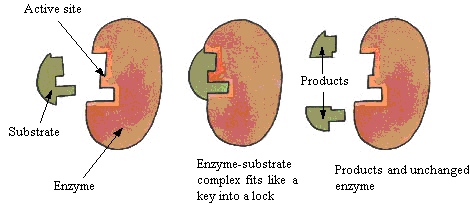Suggest how a farmer can control the population of mice at his farm without the use of peticides.
Explain how the method works.
- Use biological control
- which involves prey-predator relationship
- Predators such as snakes are used to catch the prey which is the mice.
- Population of mice will decreases.
- Predator must be specific / neutral.
- Predator must not harm the plants in the farm.
- This prey-predator interaction will ensure that the population of each other will be regulated in a cyclical manner which maintains the populations of both organisms in a dynamic equilibrium.
MEANING
- Colonization is a process whereby a species colonises and survives in a newly formed area.
- Succession is a process when one species of organisms changes the habitat which results in the organisms to be succeeded/ replaced by other species which is more suitable to the habitat.
- Activities of the pioneer species (submerged plants) cause a change in the habitat, make it more suitable to other species.
- The remains of plants and decayed bodies deposited on the pond bed.
- Water level in the pond decreases / Pond becomes shallower
- which will add nutrients to the pond water and change the pH of the water.
- This favours the growth of floating plants which replace the pioneer species.
- Floating plants cover the water surface, preventing light from penetrating the water and causing slower rate of photosynthesis in the pond
- causes many of the submerged plants to die and sink to the bottom of the pond.
- Raising the pond bed / Making the pond more shallow.
- Floating plants are gradually replaced by amphibious plants.
- The successor causes further changes to the pond, making it unfavourable to the amphibian plants to grow.
- Finally, the amphibious plants are replaced by a land community which dominates the area.
Explain why most plants cannot colonize and grow in the swamps.
- The ground is too soft and unable to support plants.
- The water-logged / muddy swamps provide very little oxygen for root respiration.
- The swamp water has a high concentration of salt and is hypertonic.
- The plants growing in the swamp will have the problem of dehydration.
- Seeds that fall into the muddy swamp will die of dehydration / insufficiency of oxygen.
- The swamp is exposed to strong sunlight and intense heat.
- As a result, the plants growing there will lose water very fast by transpiration.
Explain how the mangrove trees adapt themselves to the harsh living conditions.
- Root system which is highly branched and spreads over a big area to overcome soft mud problems.
- Avicennia sp has extensive branching roots / Rhizophora sp has stilts roots / Bruguiera sp has buttress roots
- for support the plants to trap soil particle.
- Pneumatophores (breathing roots) which grow protruding upwards above the ground with lenticels
- for gaseous exchange
- Excess salt is eliminated through hydathodes
- found at the lower epidermis of leaves.
- Viviporous seeds which germinate while still attached to the parents plant.
- The long radical produced will let the seedling stick into the ground and not submerge or drift away.
- Thick cuticle and sunken stomata
- which help to reduce the rate of transpiration
- The plant cells have high concentration of cell sap.
- The cells are able to withstand the high salt contents of the swamp.
Explain how nitrogen cycle maintain the content of nitrogen in the atmosphere through microorganisms, factory and lightning.
MICROORGANISMS
- Nitrogen-fixing bacteria in the root nodules of leguminous plants and in the soil can convert atmospheric nitrogen
- through nitrogen fixation process.
- They fix atmospheric nitrogen and convert it into ammonium compounds.
- The nitrates are then absorbed by the plants to make proteins.
- When animal eat plants, the proteins are transferred to the animals.
- When plant and animals die (or excrete nitogeneous substances) these dead organisms or nitrogeneous substances are broken down to ammonia by bacteria of decay.
- Nitrosomonas sp convert ammonia into nitrite.
- Nitrobacter sp convert nitrites to nitrates.
- Denitrifying bacteria convert nitrates back to nitrogen to complete the nitrogen cycle.
FACTORY
- Industrial process / Haber process
- chemical reaction, oxygen plus nitrogen, produces chemical fertilizer / ammonium nitrite, urea
- Industrial factory
- release nitrogen dioxide which dissolved in water producing nitrus acid and changes to nitrate when react with metalic base in soil.
LIGHTNING
- Nitrogen-fixation by lightning
- produces nitrogen dioxide which dissolve in water to produce nitrite in the soil.





